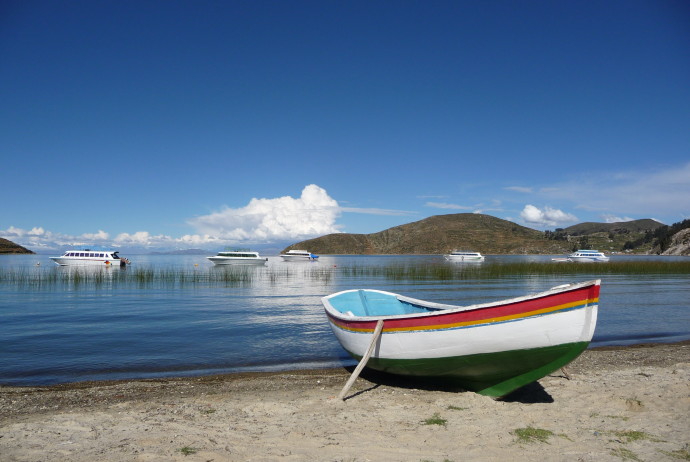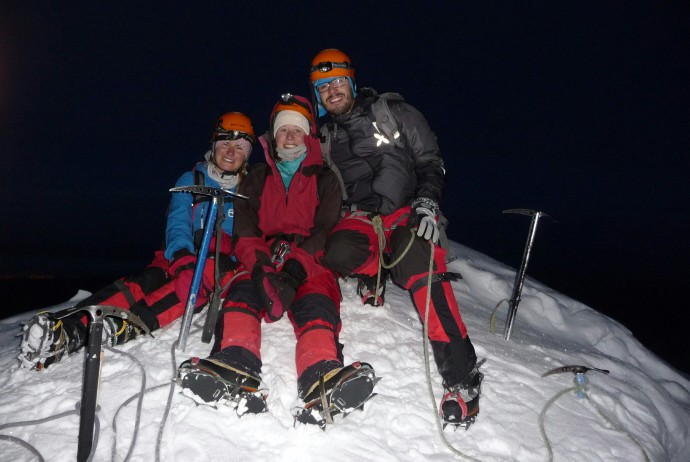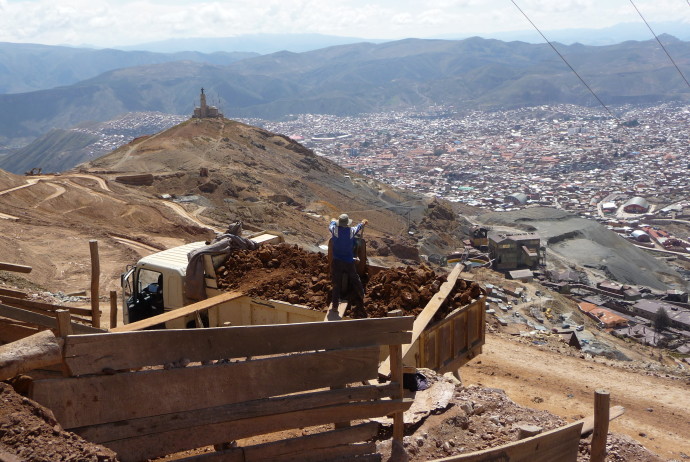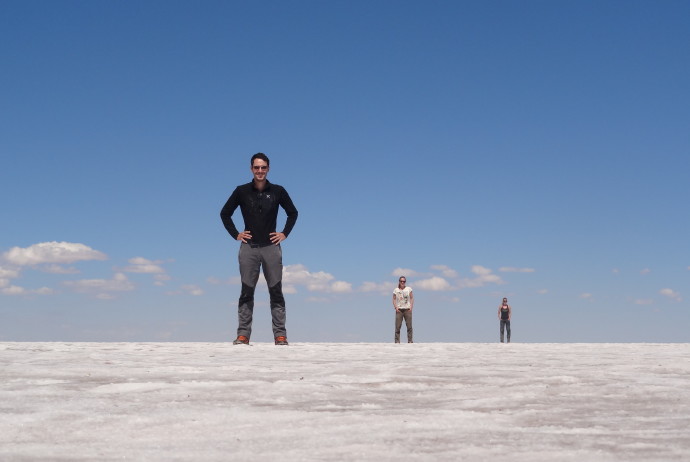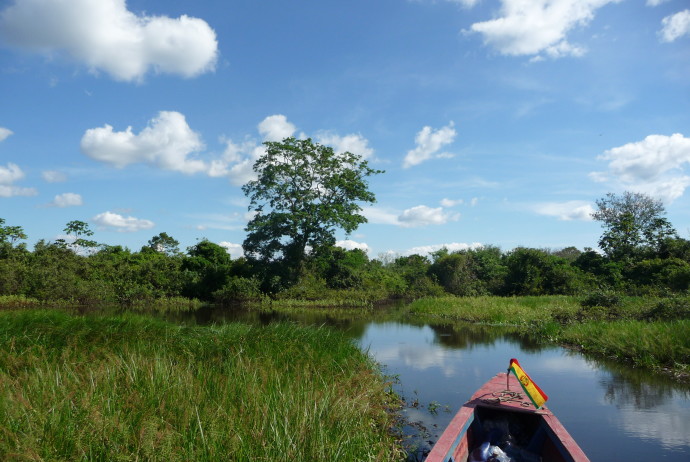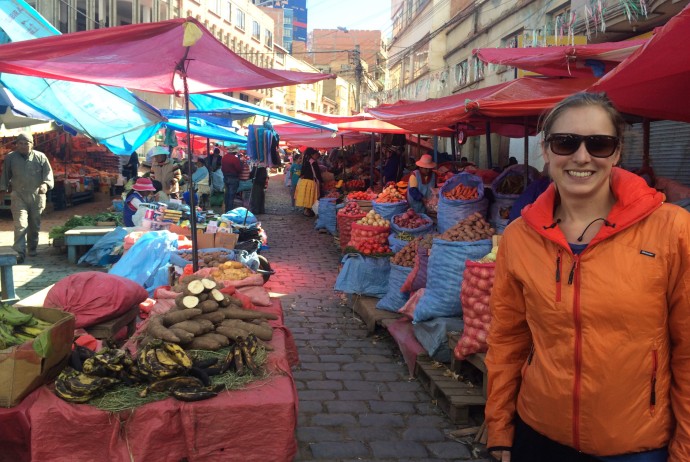Leaving La Paz on a bus like we did is quite a challenge as it takes forever to maneuver through some of the probably busiest streets we have ever seen. By the way, we have some amazing videos of the city’s crazy traffic, which entertained us from our hostel’s window better than any hollywood blockbuster could ever have. Just ask if you are interested to see them.
Anyways, as soon as our bus was outside the city area, it did not take long until the glistening blue of Lake Titicaca came in sight. However, this lake, that used to be a sea a long, long time ago, is so huge, it still took a while until we arrived at Copacabana. Most backpackers pass through this beach town when going from Bolivia to Peru or vice versa. The town itself is very touristy but still a nice place to spend an afternoon at. This is just enough time to, like us, have some delicious trout while enjoying a lovely view over the lake, to hike up Cerro Calvario to see the sunset and book tickets for the boat ride the next day to the “Isla del Sol”. This island is quite famous, as according to Inca mythology, it is the birth place of the sun as well as of the Incas as a people. Apart from historical importance, it is also recognized for being one of the lake’s most beautiful islands, and thus, we definitely wanted to see it.
Our boat took us to the North end of the island from where we walked in a nice afternoon stroll to the Southern end. While on our little “trans-island mission” we met lots of the friendly inhabitants of the island, not only people, but also donkeys, sheep, alpacas and pigs, always while enjoying lovely views. We arrived just in time to see a marvellous sunset. Afterwards we had a tasty candle-light trout dinner which was not only super delicious but also probably the last dinner in Bolivia on this trip of ours. As we slept in a hostel in the village Yumani, located up a hill, we had a spectacular view of the sunrise the following morning. Breakfast up here, with this amazing view over Lake Titicaca, tasted delicious. Afterwards we hiked down to the beach to catch a boat back to Copacabana where a big party was already going on: the 1st of May is celebrated here with colorful parades, lots of dancing and quite some booz. Despite that we would have liked to join in longer, we had to keep it short: Peru was calling and waiting to be discovered!
When at Lake Titicaca:
Where to eat & drink: There is a line up of little food stands on the beach in Copacabana and they all know how to grill the local trouts to perfection (for little money).
Where to sleep: Hostel Mirador – overlooking the lake and affordable. There is no functioning Wifi but hardly anywhere here is.
What to do: Take a boat to Isla del Sol and hike from the North to the South – we can promise you amazingly scenic views (take the path along the coast). Also, enjoy the sunset in Copacabana from the Cerro Calvario – just a 30 min hike from the city’s center (calculated for a slow high-altitude pace).
